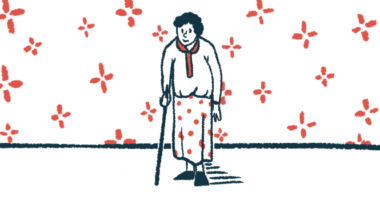Very low dose rituximab may not sustainably kill B-cells: Trial
Treatment tested in small pilot study with CAD, other AIHA patients

Very low doses of rituximab rapidly reduced blood levels of disease-driving B-cells in people with cold agglutinin disease (CAD) and other forms of autoimmune hemolytic anemia (AIHA), but this suppression was not consistently sustained over time.
Those are the findings of a small pilot Phase 2 clinical trial (EudraCT 2016-002478-11) conducted in the European Union that included seven adults with CAD.
Rituximab isn’t approved for AIHA, but it is sometimes used off-label to treat the rare immune disorder. Here, a team of researchers in Austria had believed that doses lower than what’s approved for other conditions might be effective in AIHA. Given that the study was small and relatively short, however, the team emphasized that more clinical studies are needed to test rituximab at these dose levels.
“The current data do not provide sufficient evidence to treat patients with low-dose rituximab regimens and future clinical trials are necessary to investigate their clinical efficacy,” the researchers wrote.
The study, “Very low doses of rituximab in autoimmune hemolytic anemia — an open-label, phase II pilot trial,” was published in the journal Frontiers in Medicine.
‘No formal dose-finding studies’ to date of rituximab in autoimmune diseases
AIHA refers to a group of autoimmune conditions in which the body mistakenly produces self-reactive antibodies, or autoantibodies, that attack and destroy healthy red blood cells. CAD is a form of AIHA characterized by a specific type of autoantibodies called cold agglutinins, which bind to red blood cells at cold temperatures.
B-cells are responsible for producing antibodies, including the self-reactive ones that cause autoimmune disorders. Rituximab, a therapy designed to target and kill B-cells, is approved for treating certain cancers and autoimmune conditions.
The researchers noted that, while not approved for any form of AIHA, rituximab is recommended by experts for use in severe cases. The idea is that, by reducing circulating levels of B-cells, the production of disease-driving antibodies will be lower, thereby easing AIHA symptoms.
Rituximab is given via infusions into the bloodstream, with the dose and frequency varying by disease.
However, according to the researchers, “there are no formal dose-finding studies for autoimmune diseases,” meaning that the optimal dosing regimen that sufficiently depletes B-cells in these conditions remains largely unclear.
There is pharmacological evidence suggesting that doses substantially lower than the approved dosing regimens may be effective in autoimmune conditions such as AIHA.
To learn more, the team conducted a Phase 2 pilot study in which six women and four men with AIHA, seven of whom had CAD, were treated with very low dose rituximab regimens. The patients’ mean age was 68; all had received some type of treatment before this trial.
The doses given here were chosen based on previous studies in healthy volunteers. The goal was achieving at least a 95% suppression of B-cells.
The scientists started with the lowest dosing regimen, and if that wasn’t effective for all evaluated participants, they tested a higher dose in the next group.
B-cell reductions in patients not consistently sustained over time in trial
Ultimately, three participants received rituximab infusions of a body surface area-based dose (5 mg per square meter), given once every three weeks. The remaining participants received fixed rituximab doses: 20 mg every four weeks, given to three patients; 50 mg every three months, also administered to three patients; and 100 mg every three months, given to one patient.
Across these dosing regimens, the first rituximab infusion led to a rapid depletion of B-cells in the first 24 hours for all but one patient who received the 5 mg per square meter dose.
However, all of the dosing regimens were ultimately deemed ineffective, because these B-cell reductions were not uniformly sustained over time.
There was substantial variability between patients, with some achieving sustained B-cell depletion through the entire treatment period, and others seeing a B-cell recovery. The researchers also noted that they didn’t see any obvious differences in treatment responses between AIHA types.
A close relationship was seen between B-cell counts and rituximab levels in the bloodstream. B-cells dropped below the limit of detection when rituximab concentrations were more than 0.4 micrograms per milliliter, which, according the the scientists “may guide future studies using low doses of rituximab.”
In conclusion, low doses of rituximab transiently depleted [B-cells] in almost all patients, but the tested low-dose regimens were able to permanently suppress [B-cells] in only a few patients.
Six participants showed signs of ongoing red blood cell destruction during the treatment period, though the researchers noted the study wasn’t designed to test the clinical efficacy of rituximab in AIHA.
Regarding emergency treatments, blood transfusions were given to two patients, and Enjaymo (sutimlimab-jome), the only approved CAD therapy, to one patient.
The patient who received 100 mg of rituximab had CAD and developed inflammation of the lining of the heart approximately 7.5 months after starting treatment. This was considered a serious adverse event that might be related to treatment.
“In conclusion, low doses of rituximab transiently depleted [B-cells] in almost all patients, but the tested low-dose regimens were able to permanently suppress [B-cells] in only a few patients,” the team wrote.
The pilot study was terminated early due to low recruitment related to the COVID-19 pandemic.
Thus, given the small number of participants in the study, “conclusions should … be drawn with caution and further clinical trials to support the data would be desirable,” the researchers concluded.








